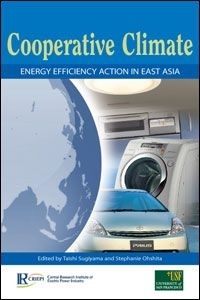Cooperative Climate: Part III
In Parts I and II,we observed the following:
- All countries in East Asia have some energy efficiency policies in place already and many have made great progress. But there still exists a large potential and an acute need for further energy efficiency improvement. Energy efficiency policies require ongoing adjustment and revitalization as technology advances. International cooperation can promote energy efficiency improvement and realize multiple benefits, including energy security, economic stability and environmental quality.
- In terms of cooperation mechanisms, policy development cooperation, beyond policy dialogue, is growing in importance as host countries create a top-down push and incentives for energy efficiency improvement to leverage private and governmental financing.
- In terms of the institutional structure of such cooperation, we observe the growing role of independent, international networks that facilitate the development of energy efficiency policies.
- There is a trend in target sectors and technologies toward more distributed targets such as appliances, buildings and demand-side management.In the industrial sector, there is a trend away from hard technology demonstration to soft and more comprehensive policy tools, including voluntary agreements and energy management systems.
- Despite existing cooperation efforts, there are still massive opportunities for government intervention in energy efficiency improvement to accelerate the uptake of new, more efficient technologies. In contrast with the high-level political attention paid to energy efficiency improvement, energy efficiency agencies are chronically understaffed and underfinanced, and lack the capacity to develop and implement necessary policy.
- While existing international organizations are financing several policy development activities, the resources have not been sufficient to support many other worthwhile activities. In addition, host countries have frequently found the need for quicker responses than multilateral institutions can typically provide.
In sum, most governments understand that energy efficiency improvements have multiple benefits, ranging from energy security to economic efficiency; pollution reduction and climate change prevention. However, political attention and resource allocation have rarely been enough to consistently implement energy efficiency policies on the ground. Many countries lack dedicated institutions with the scientific expertise and industrial participation that are necessary to regularly update regulations and monitor compliance. In many countries, there is only a handful of staff in charge of all energy efficiency policies for an entire country. There is a need to strengthen the energy efficiency institutions and to enhance their work through international cooperation.
Other modes of technology cooperation are important, but their roles are secondary to the policy assistance described above. There have been many cases of technology demonstration projects that have not resulted in the diffusion of the targeted technologies, due to insufficient market analysis or limited implementation of environmental regulations (Ohshita, 2002). Personnel training and exchange programs have generally met their own internal goals, but their effectiveness is generally difficult to measure in quantitative terms such as energy or CO2 reductions. For an international framework to be widely supported, it is important that actions (e.g., persons trained and standards set) as well as outcomes (energy reductions and CO2 reductions) be measurable. Assisting the implementation of policies and measures, particularly energy efficiency standards, has been successful in this regard.
|
|
